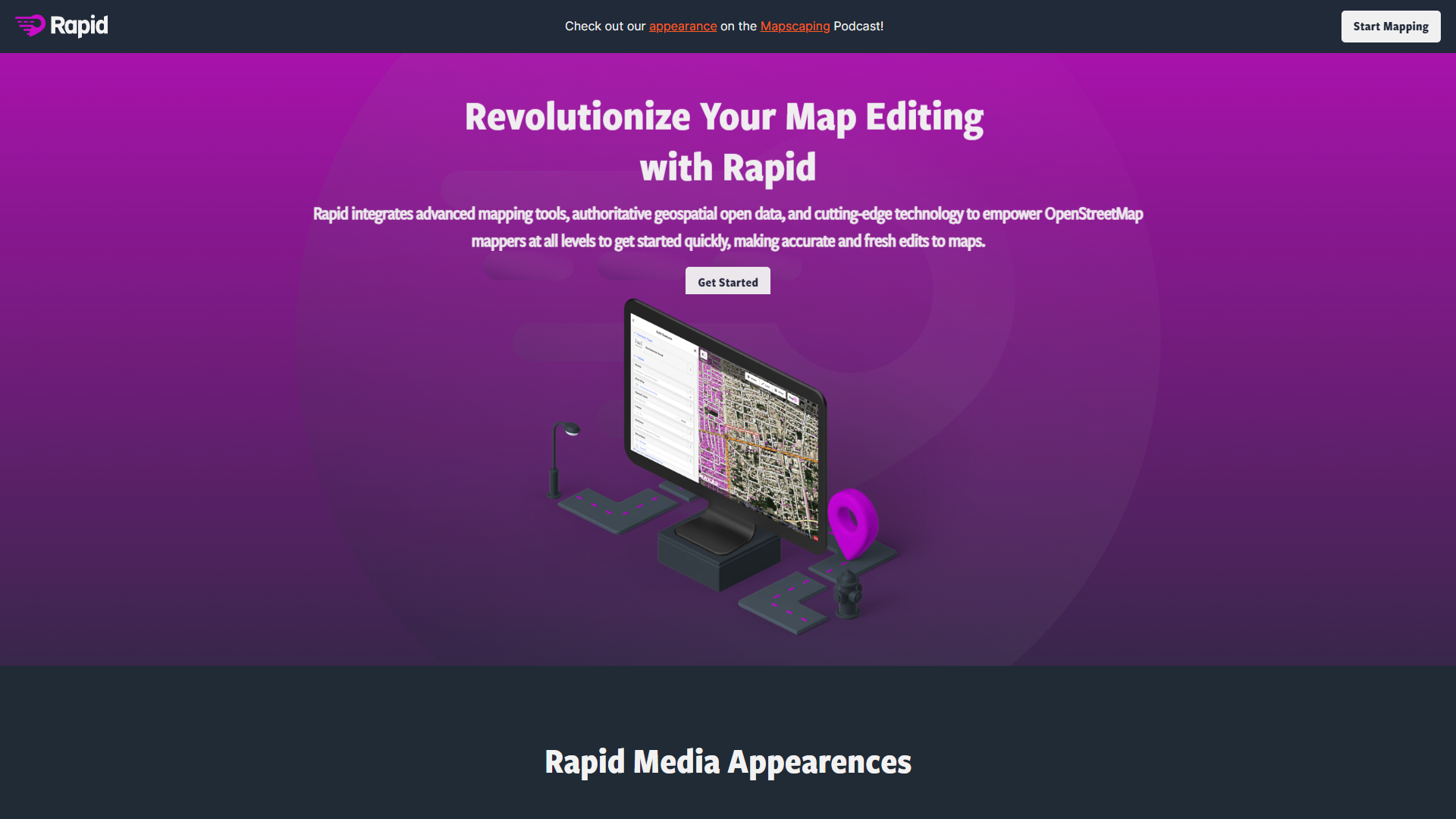Overview
Rapid Editor is an innovative mapping tool that aims to streamline the map editing process for users across different proficiency levels. By integrating advanced mapping tools, authoritative geospatial data, and cutting-edge AI technology, it allows users to make precise and fresh changes to OpenStreetMap projects. One of its standout features is the capability to eliminate much of the manual labor involved in map editing. It uses open data and AI-predicted features to modify maps quickly and accurately. Users benefit from AI-analyzed satellite imagery, which provides an extensive overview of areas that may still be missing or require more data. With an intuitive interface, mappers of any skill level can make significant contributions to mapping projects. Rapid Editor supports individual tasks and large-scale community-driven initiatives, including humanitarian efforts, making it an ideal choice for open-source mapping projects. Its straightforward design and advanced features make it a worthy addition to any mapper's toolkit.
Key features
- Advanced mapping technology: Rapid Editor integrates progressive mapping technologies that streamline and enhance the map editing process, ensuring that users of all skill levels can work efficiently and effectively.
- AI-predicted feature modifications: Utilizing artificial intelligence, this tool predicts and suggests modifications, reducing manual input and significantly improving the speed of map updates.
- Open data integration: The tool taps into a vast pool of open geospatial data, providing users with comprehensive resources to ensure accurate mapping.
- User-friendly interface: Designed with an intuitive interface, Rapid Editor makes mapping simple and accessible, guiding users seamlessly through each step of the editing process.
- AI-analyzed satellite imagery: Detailed satellite images analyzed by AI help users identify unmapped or missing data areas, enabling more comprehensive and precise map edits.
- Community and humanitarian support: The platform is ideal for large-scale mapping projects, supporting community and humanitarian efforts with its robust toolset.
 Pros
Pros
- Enhanced editing accuracy: Rapid Editor significantly boosts the accuracy of edits on OpenStreetMap projects, making it a valuable tool for achieving high-quality mapping outcomes.
- Collaborative mapping support: This tool fosters collaboration, offering features that support group projects and large-scale community mapping endeavors efficiently.
- Streamlined mapping process: With Rapid Editor, the map editing process becomes swift and straightforward, greatly reducing the time spent on manual updates and corrections.
- Vast open data access: Users benefit from extensive data sources, which provide them with the necessary resources for thorough and precise map editing tasks.
- Intuitive user interface: The interface is crafted to cater to both novice and seasoned mappers, ensuring a smooth and hassle-free experience in all mapping activities.
 Cons
Cons
- Steep learning curve: New users might find it challenging to understand and utilize all the tool's features efficiently at first, requiring some time to master the interface and functions.
- Limited offline features: The tool's heavy reliance on online data sources means users may find functionality limited when working offline or in low-connectivity areas.
- Dependent on data availability: Rapid Editor's effectiveness is highly dependent on the availability and quality of the open geospatial data it uses, which can vary based on regions.
- Reduced manual mapping skills: Overreliance on AI predictions and automated features might cause users to underdevelop their traditional mapping skills over time.
- Complexity for beginners: Although the interface is intuitive, the complexity of mapping concepts and tools might still pose a challenge for absolute beginners.












